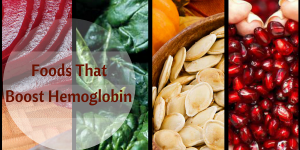
Intake of Dates and Pomegranates
Pomegranates are delicious. From kids to adults everyone enjoys them very much. This fruit is one natural source of Vitamin A, C, E, folic acid and iron. It contains three times of antioxidants of green tea. By taking this delicious fruit in any form will increase the supply of iron in blood and helps in reducing the symptoms of low Hemoglobin (HB) level in the blood.
Dates are favorites of everyone too! The tempting dates attract all and are enjoyed by all. Dates or dried dates are considered to be extremely nutritious. Along with iron, they contain potassium, calcium, magnesium, Vitamin A and Vitamin B. Dates can boost your energy level as well.
Add Beetroot in your daily food
Beetroot is an appropriate source of iron. About one cup sliced beetroot will give you 1.1 mg of iron. You can eat beetroot in various forms like salads, beetroot juice, grated beetroot along with other vegetables like potatoes and green beans.
A plain beetroot juice for 20 days can tremendously improve the hemoglobin level, which is tested by me personally. Alternatively, you can enjoy a mixed salad of fresh vegetables which includes carrot, cucumber and onion along with grated beetroot.
Eating Watermelon
Watermelon is one of the most refreshing, thirst quenching fruit available year round. Watermelon is not only delicious but also is very nutritious. Studies have shown that deep red, juicy watermelons have displaced the tomato as the lycopene king.
Its juice can also be used to increase haemoglobin during pregnancy, along with beetroot and pomegranate juice.
Lycopene is fat-soluble, meaning that it needs certain fats in the blood for better absorption by the body. Watermelon consists of 92% of water and 8% of sugar.
The fruit provides iron along with high levels of proteins, carbohydrates, potassium, Vitamin C and Vitamin B. Regularly eating this delicious and juicy fruit will Boost your energy level and stamina. Boost your energy level
Eating Yogurt, Broccoli
Yogurt is extremely rich in calcium. Due to its preparation process, this dietary staple contains more calcium than the milk, from which it is made. Global Health Body results say that, 8-ounce (250 grams) serving of low-fat yogurt provides a 42 percent of your daily calcium needs.
Of all the non-dairy sources of calcium, Broccoli is second to leafy vegetables; it contains 80mg of calcium. Broccoli isn’t only for bone-health; it is an excellent source of Vitamin C, fiber and nutrients. You can make use of broccoli in Pasta or in Salads.
Fresh Green Leafy Vegetables
Leafy vegetables are great source of iron and calcium. We have been told thousands of times by our parents to have some green vegetables, and they were right for a reason. Fresh green vegetables like Spinach (Palak), Fenugreek Leaves (Methi) and beans can be used in our daily diet to balance the level of calcium as well as haemoglobin.
Lentils like daal, rajma, sesame seeds (til) are other good source of iron. Grains like barley, rice, semolina, bajra, maize can also be included. Dry fruits like Almonds (Badaam), dried peaches or raisins are the best source of iron for you. If you prefer eating Non vegetarian items, meat and fish are also rich in iron and calcium.
Vitamin C Rich Foods
Vitamin C rich food helps the body to absorb iron from the food.Low level haemoglobin due to deficiency of vitamin C can be corrected by proper intake of Vitamin C rich fruits like Oranges, strawberries, guava, kiwi, papaya and grapefruit. You can also enjoy them together by making delicious, lip-smacking juices or mixed fruit salad.
If your haemoglobin count is low because your body is not producing sufficient red blood cells, then you could be deficient in folic acid (B-Complex vitamin that is required to make red blood cells). Sources of folic acid include lentils, dried beans, peas, sprouts, pineapple, peanuts etc.
If you are having more of Vitamin C sources, then you have to increase the intake of folic acid rich food in your daily diet.
Another way is to add dried herbs to your diet which will also help in increasing the absorption of iron. Especially, spearmint leaves (Pudina), Basil leaves (Tulsi), coriander (Dhania), bay leaf may be helpful.
Increasing Legumes in your daily diet
All types of Legumes are best plant foods, enriched with iron. Legumes include soya nuts, red kidney beans, chickpeas, black-eyed peas, black beans, lentils, fava beans.
Eating Legumes in your daily diet will gradually improve your iron level and help to energise you. Women having gas problems should limit their legumes consumptions to 3 times a week.
Pumpkin seeds
There are lots of reasons to eat pumpkin seeds. They are not only rich in iron but also rich in Omega-3 fatty acids and zinc. One-fourth cup of pumpkin seeds contains 8.6mg of iron. The better way to eat them is as it is, raw, or you can also add them in salad and eat.
It has been seen that comparatively, vegetarian sources of iron is less readily absorbed, so vegetarians, especially pre-menopausal females should take slightly higher intake of iron. The above mentioned food along with foods that contains Vitamin C will be more helpful for curing iron deficiency.
Leave a Reply